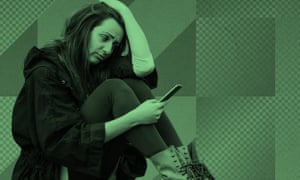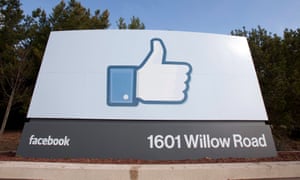NDM independent case study: Media Factsheet research
Media Factsheet- 083 The impact of new media on TV
- The BBC Licence Fee in the UK, BBC services is funded by a licence fee. In 2011, the cost of a full licence was £145.50 with various concessions available for those with black and white television or vision impairments. The cost of the licence fee covers eight television channels, thirteen national radio networks, local radio and online services.
- ‘’The BBC’s on demand service, BBC iPlayer, offers the audience the chance to view or listen to content at a later time than its original broadcast.’’
- The iPlayer says “My job is to make sure we are in touch with what audiences want from the service, by analysing user statistics about what is being used the most or the least, and by asking people directly what they’d choose to change in BBCiPlayer if they could.’’
Who is allowed to watch the BBC iPlayer?
‘’A TV licence is required to watch BBC content online – a result of changing viewing habits and an attempt to stem financial losses. The corporation hopes more people will decide to start paying than stop watching’’
Why was a licence not needed for catch-up in the first place?
The current legislation governing TV licences was originally part of the 2003 Communications Act; the iPlayer was not launched until 2007. In recent years more people have shifted to catch-up and online viewing, making rules written more than a decade ago even more outdated.
While the average person in the UK still spends about 80% of their viewing time watching live or recorded TV, that figure is falling. Among younger generations the average is less than half that, and increasing numbers are not watching (or recording) live TV at all.
Media Factsheet- 104 Audiences in the digital age
Television
Traditional Distribution/Exhibiting:
- Television was restricted to a limited number of channels.
- Programmes were broadcast at set times and only occasionally repeated. Programmes could be recorded on video.
- Satellite and cable provided access to digital channels and subsequently the number of channels available increased.
- Digital home recording became available via TiVo/Sky+ etc.
- Channels offered ‘plus 1’ channels repeating all shows an hour later.
- Most channels/digital providers offer audiences ‘on demand ‘services where television programmes can be viewed at any time either on TV or on-line.
- TV programmes are available to download and watch on mobile devices.
Audience Behaviour
Digital media has provided more choice in terms of how and when media products are accessed. Live TV viewing and attendance at cinemas is in decline. Social networking has replaced institutional based media for some whilst others access media products in alternative ways, such as streaming on-line, downloading or DVD/ Blu-ray. iPlayer allows BBC television programmes to be downloaded to a mobile device which can then be viewed anywhere and at any time. Viewers are no longer tied to schedules or locations.
Has allowed audiences to have a more proactive relationship with institutions and they can be seen to be much more active than in the past. Audiences can be seen to have more of an impact on production and can even be part of the production process themselves. Some see this as a positive move that reduces the amount of power held by institutions.
Media Factsheet- 113 TV & Social Media
As we discussed earlier, watching TV is far from a passive activity with viewers quietly consuming what is screened in front of them. Far from bringing in a radical change to the way we watch TV, social media could be said to build on existing audience behaviours. Recent figures tell us that 60% of smartphone owners and 65% of tablet computer owners use their devices while watching TV. Furthermore, 40% of all Twitter traffic during peak times is about TV. There is clearly a very close relationship between Twitter and television.
The phenomenon of the tweet-along is an interesting development in the way audiences consume TV. Fans of shows such as The X-Factor are able to exchange views about the show in real time as it is broadcast by using social networking tools, especially Twitter. By using a hashtag (#), Twitter users can categorise their tweets and send messages that other people that are also watching the show can read, building a real time discussion of the show as it is broadcast. Far from being a modern distraction that prevents people from concentrating on the show, twitter takes discussions that are already going on in the room amongst the family and broadens them out across the country. Opinions that viewers hundreds of miles away are tweeting about the show can be introduced to the family discussion and form part of their conversation.
What Does It All Mean?
The growing level of engagement on Twitter shows that audiences still value the communal experience of watching TV. Whereas people used to discuss TV at school or work the next day, those conversations are happening in real time as the programmes are being shown. This interaction also means that people will continue to watch TV live to air rather than relying on time shifting for much of their viewing. Twitter offers viewers a new way to talk about their favourite shows and to interact with TV. Their tweets can be analysed by broadcasters to find out valuable information about the audience which is hugely useful for advertisers and programme makers. It seems that social media and TV were almost made for each other. It will be interesting to see how the relationship develops.
BBC iPlayer users will have to pay TV licence fee from 1 September
Though the vast majority of households own a TV licence, those without one who only watch catch-up content and not live broadcasts were technically exempt from paying the £145 a year charge.
The government had promised to close the loophole, which already costs the BBC about £150m a year and is likely to increase, during negotiations last summer that also saw the corporation agree to shoulder the £750m burden of free licence fees for the over-75s.
A spokesperson for TV licensing said: “As of 1 September 2016, a change in the law means you need to be covered by a TV licence to download or watch BBC programmes on demand – including catch-up TV – on BBC iPlayer. This applies to all devices. The change will not affect the huge majority of households which are already licensed.
“Fewer than 2% of households only watch catch-up – and only those watching BBC iPlayer as part of their catch-up and on-demand viewing will need to buy a licence from September. You will not need a TV licence to download or watch programmes on demand from other providers, such as YouTube, Netflix, ITV Hub, All 4 or Demand 5. All unlicensed households are being mailed and a publicity campaign will happen before 1 September.”
IPlayer licence rules have changed – but there's one loophole left for students
The news was a blow to many heading to university this month, given that so few will be bringing a TV along with them. According to research by TV Licensing, iPlayer is the most popular catch-up platform among students, with the vast majority watching programmes on their laptops and phones.
The change adds to students’ mounting financial burdens this year, including tuition fee rises and the recent scrapping of maintenance grants. A petition against the rule, launched by a Loughborough University student, has gained more than 18,000 signatures.
However, it appears one loophole will remain open: students will still be able to access the iPlayer for free on mobile devices that are registered at their parents’ address. (This will work only as long as it is registered as the student’s primary address.)
The BBC statement reads: “In limited circumstances, students can be covered by the licence at their parents’ address. The device must be powered by its own internal batteries – for example, a tablet or mobile phone – and must not be plugged it into the mains when receiving television. This use is enabled by the regulations governing TV Licensing.
Failure to obey the new law will result in a fine of up to £1,000, but just how the BBC will be able to tell if your device is plugged into the mains or not remains to be seen. For now, it seems that most students will still be able to get their Bake-Off fix for free.
Independent NDM case study: Up-to-the-minute web research
How will the BBC detect people watching iPlayer without a TV
Licence?
Tales of vans driving around peeking into people’s homes to catch them watching the BBC without a TV licence have been a staple of the rightwing press for years (and more recently, an extremist wing of anti-TV licensing Twitter) but this weekend the Telegraph put an alarming new twist on the story.
Whatever it does come up with, the rationale is clear. The BBC says it already loses £150m a year to people who say they don’t need a TV licence because they only watch catch up, and with the number of households saying they don’t have a TV increasing each year, it needs to find some way of making sure people who consume its programmes any other way are paying. In short, we need people to believe the Beeb is watching – otherwise one day there might not be a BBC to watch.




